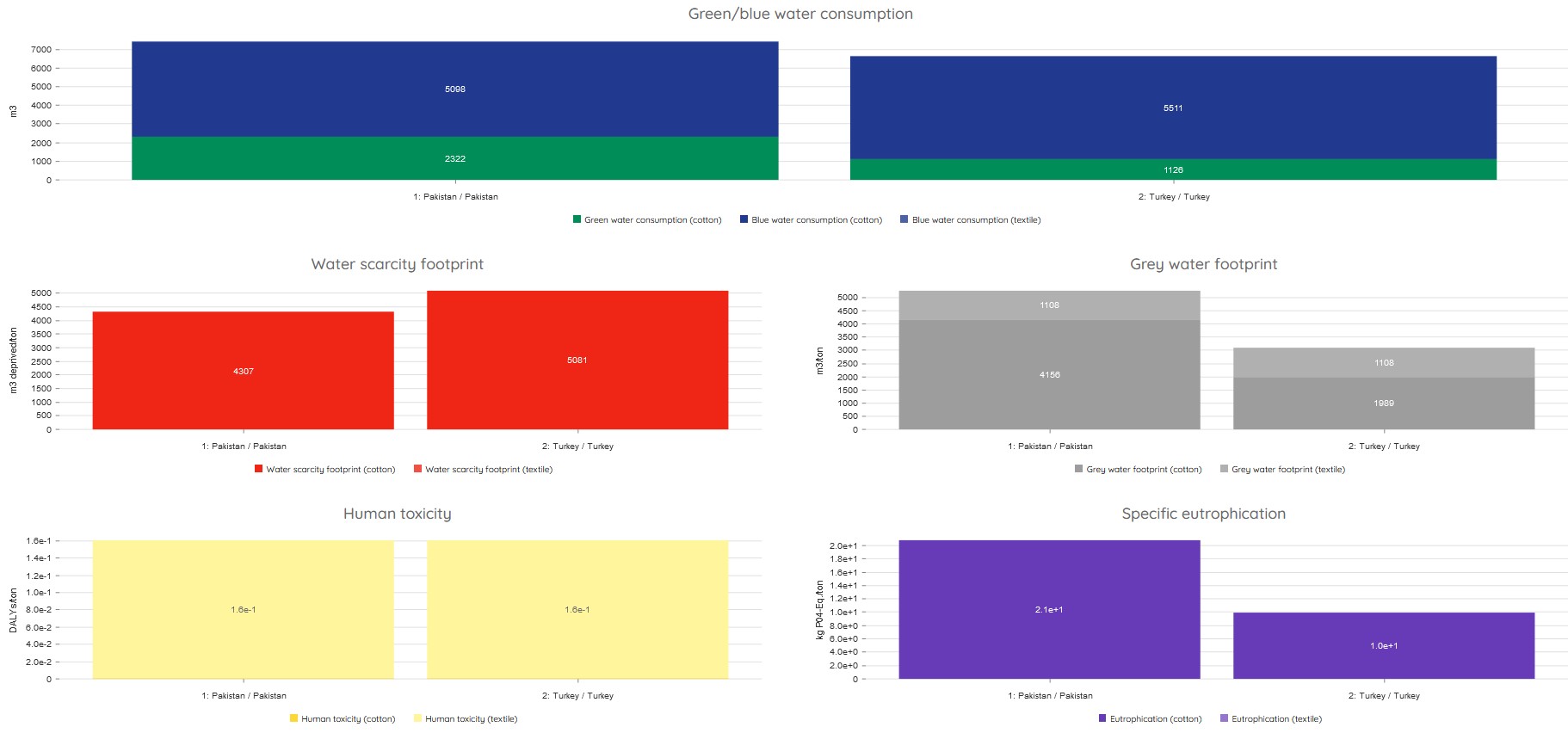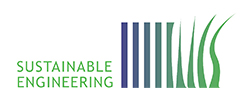The water footprint calculator helps decision-makers quantify water use along the cotton-textile value chain and the associated effects on human health and ecosystems. It also helps compare various ways to reduce the water footprint.
The web-based water footprint (WF) tool consists of a database and a model to assess the impact of water consumption and use on human health and ecosystems in cotton cultivation (especially irrigation) and textile processing (e.g. dyeing of fabrics). The results include the consumption of blue and green water, the water scarcity footprint, the grey water footprint, the toxicity effects (e.g. due to the derivation from untreated textile wastewater) and eutrophication.
The calculation is possible on a global and national level (country averages) as well as on a local level for the Punjab Province in Pakistan with high temporal and spatial resolution. The region-specific water database was developed with the help of satellite remote sensing, field studies, hydrological and hydraulic modelling, company audits and water quality monitoring. In order to evaluate the local consequences of water consumption and pollution, regionally specific cause-and-effect chains were modelled. These take into account different impact pathways on human health and ecosystems.
Uusers can set relevant parameters for both cotton and textile production (e.g. irrigation technology for cotton cultivation or parameters for wastewater quality in textile production). This helps develop scenarios for reducing the water footprint and compare their effectiveness. The results can be displayed separately for cotton cultivation or textile production, or combined. The system presents the contribution of each production step to the water footprint.








